What is Dwarfcorp?
DwarfCorp is a comedic fantasy real-time strategy game in which you lead a colony of ruthless capitalist Dwarves to discover new lands, and exploit them for profit!
(Support us on Greenlight!)
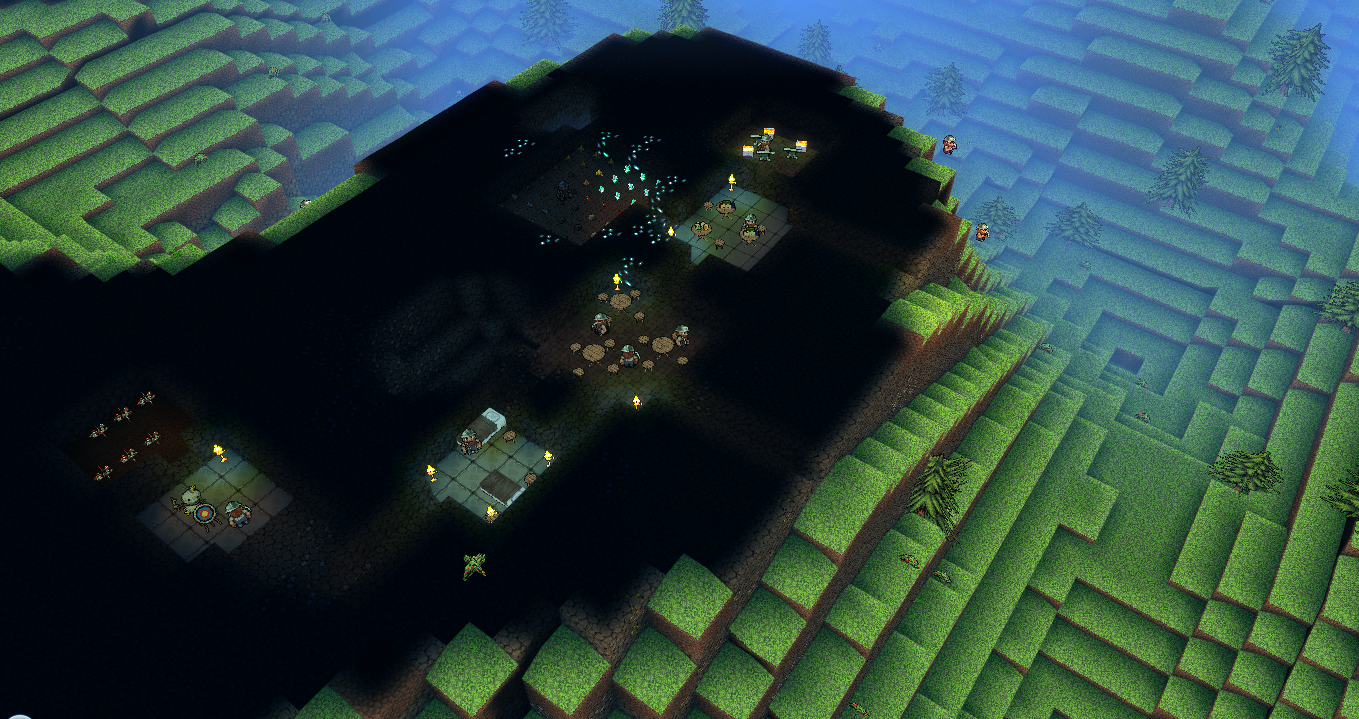
Dig deep into the earth to discover rare gems and ores, and send them back to the motherland in a balloon or ship. Defend your colony with walls, traps, and mercenaries. Promote your employees for their good work, or give them a slap if they get sloppy. Meet Elves, Goblins, Mole Men, Demons and more! Design your company logo and color scheme, and watch your company stock rise and fall against your competitors!
We are a two-man team of amateurs making the game of our dreams in our spare time. After developing this game for almost a year, we will soon be looking for backers on Kickstarter to help us make releasing this a reality. We are also looking for feedback and potential collaborators. We'd love to hear from you!
Story
Back in the Dwarven Motherland across the great sea, the Dwarven King, Dunold the Wise, has chartered a number of Dwarf Companies to explore and colonize strange new lands beyond the sea. As a Regional Manager in one of these companies, it is your duty to scout out one such island and make a foothold for Dwarven civilization there.
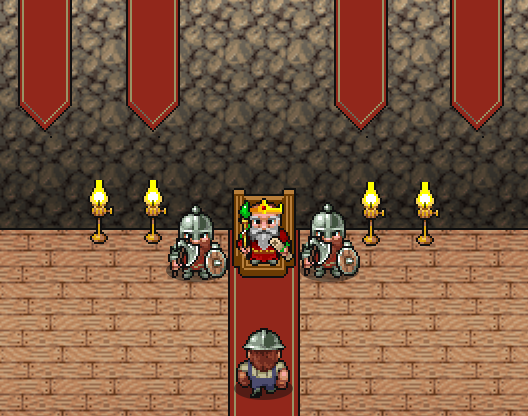
The Dwarves are a hardy race, and with access to gold, a warm hearth, and ale, can overcome any challenge -- and this colonization business is going to be a major challenge. The strange lands beyond the sea are uncivilized wilds, and full of unknown dangers. In addition, competing companies see profit in these lands as well, and they don't take kindly to competing firms edging in on their territory. Dwarven companies are ruthless competitors, demanding profits for their shareholders at all costs. If that means sacrificing a few measly workers for that extra ton of gold ore, so be it!
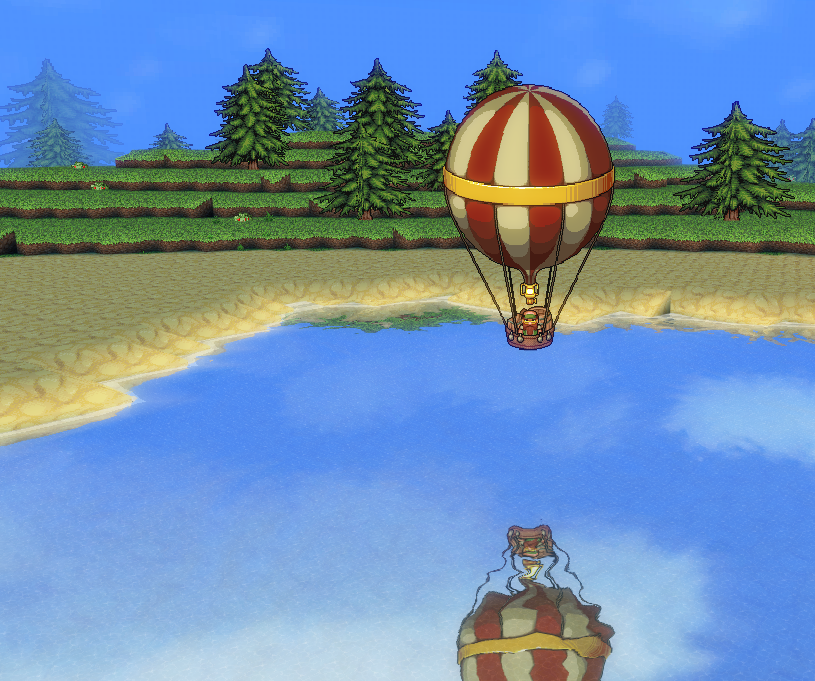
These are trying times for the Dwarves. Will you manage your company well and gain profit and glory? Or will you be driven back to the motherland by the hordes of Goblins, Elves and Mole Men, and thrown to the dustbin of history?
Gameplay Features
Dwarfcorp is played from a free-floating overhead perspective. The game takes place both above and below ground, and so is a truly 3D real-time strategy game. You can go up and down slices of the terrain, all the way from the fiery underdark to the snowy mountain tops.

You command a company of Dwarves by assigning them tasks such as Building, Mining, Gathering, or Attacking. Dwarves are pretty smart. Using symbolic planning-based AI, the Dwarves seek out unique ways to meet their own goals. Tell a dwarf to build a wood wall, and he will determine the best way to do that might be to chop down a tree, or else to grab the wood from a stockpile.

The goal is to gather resources and send them back to the Dwarven Motherland for profits, and grow your colony from a tiny enclave to a huge fortress. Generally, the more valuable the ore, the deeper it is in the earth. Using the money from gathering resources, you can promote your Dwarves, or make them happier by paying them more. You can also hire more Dwarves with special skills such as Craftsdwarves, Military Dwarves, Mages, and Musketdwarves to join your colony.
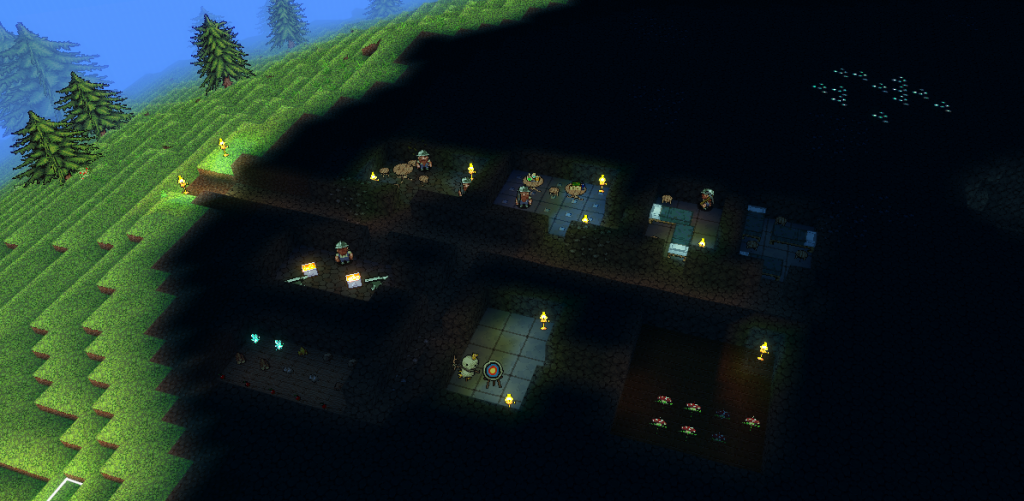
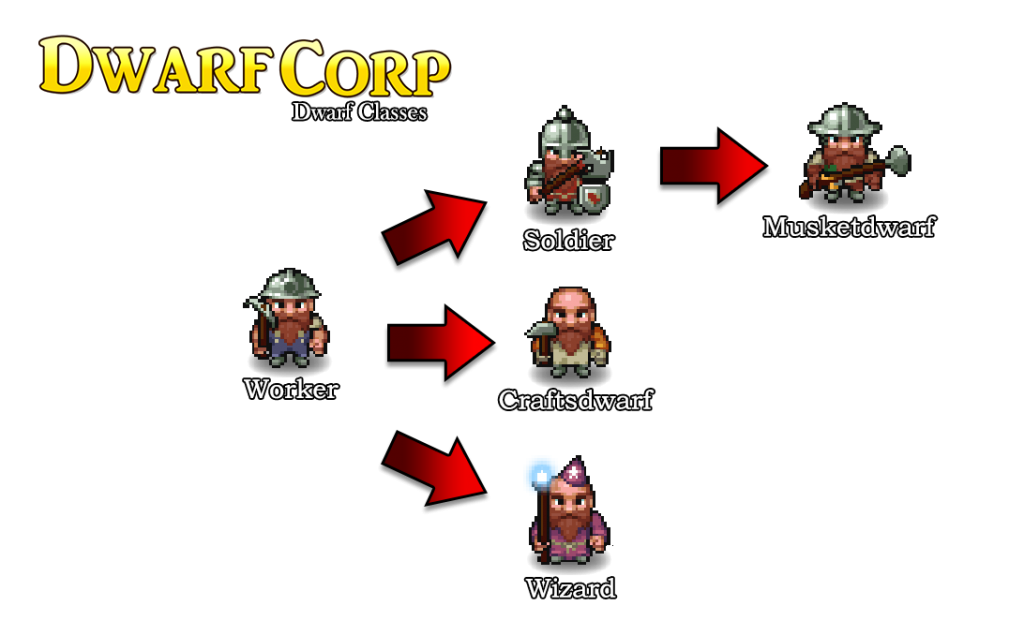
With your profits, you can upgrade your colony by constructing rooms. Training Rooms can give your Dwarves the edge in combat -- The Forge can be used to construct a wide variety of mechanisms and weapons to make your operation more efficient, The Laboratory allows your magical Dwarves to research powerful spells -- and of course Drinking Halls and Bedrooms allow your Dwarves to rest and relax (like they'll be doing any of that!)You can choose to pay whatever you want to your Dwarves, but if you pay them too little, or treat them too poorly (say, by not giving them enough ale), they may go on strike! Unhappy Dwarves may choose to stay in bed rather than go to work, and will write you a bad manager's report to the corporate higher-ups. Happy Dwarves will be more efficient, and will even sing while working!
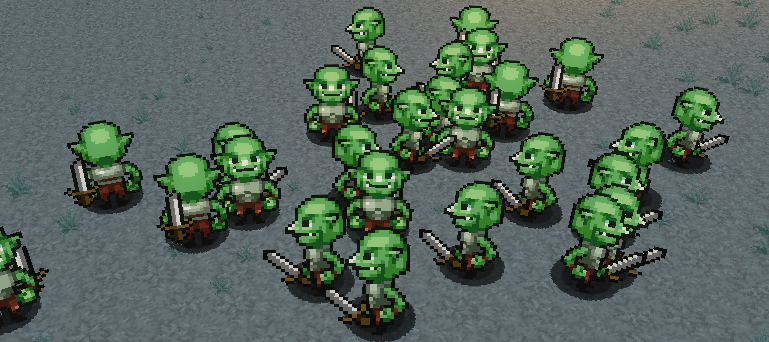
Beware! The surface is full of dangers. Hostile Elves and Goblins aren't too keen on the Dwarves coming and stealing all their stuff. Underground, it isn't much safer, as Mole Men and Demons dwell there.Leverage your technical superiority over the local savages! Defend your fortress by constructing traps, hiring mercenaries and building a dazzling array of walls and channels.
The World
The islands in DwarfCorp are procedurally generated and fully simulated.They are different every time you start playing. Fault lines, air currents, moisture, temperature, rainfall, rivers, lakes and oceans are all simulated through the passage of time -- which gives rise to forests, deserts, snowy tundra, jungles and grasslands. Additionally, civilizations of Goblins, Elves, Humans and Demons are randomly generated and given time to "fight it out," so to speak, on the island. So you, as the Dwarven outsider, will make quite a splash as you arrive.
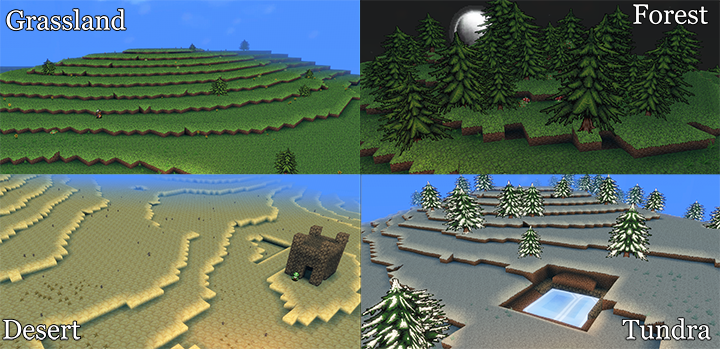
And speaking of splashing, DwarfCorp features a finite liquid simulation system. Drain entire lakes for Dwarven industry! Power water wheels with the flow of rivers! Direct channels of lava from volcanoes! Just take care that none of your employees drown.
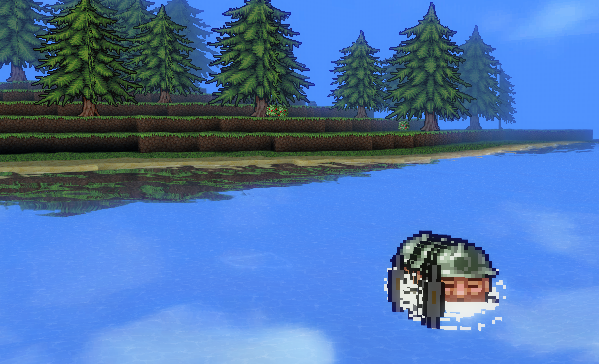
Day and night are simulated in the game, with the sun, moon, stars, and clouds dynamically moving across the sky. During the day, your employees may want to forage for food, but at night they had best stay underground -- where they can find caves, ores, dungeons, and other treasures.
-
Stay abreast of the latest news and content at our website (Dwarfcorp.com), join our forums (Dwarfcorp.com), follow us on twitter! (@Dwarfcorp)
In this article, we thought we would share our experiences with DwarfCorp, our recently funded video game kickstarter project.
DwarfCorp (short for Dwarf Corporation) is a 3D simulation/strategy game for PC, Linux and Mac where you micromanage a colony of ruthless capitalist Dwarves to mine, manufacture, and explore for profit. The game draws heavily from some of our favorite games: Dwarf Fortress, Dungeon Keeper, and Minecraft.
We are Completely Fair Games, Ltd, a two-man operation out of Pittsburgh, PA. During our kickstarter, we went from being completely unknown hobbyist devs with no money to founding a game company, creating a community, and of course, getting $45,000 for the $20,000 we asked for.
This details how we got started, what went right, what went wrong, and where we’re going next.
The Beginning
Both of us are academics from Carnegie Mellon University. We met in college at a club called Game Creation Society. This club brings together artists, programmers, and designers to create little one-semester game projects of varying quality and size. It allowed us to network with some very talented individuals and develop the skills of starting and managing game projects.
Through the club, we collaborated with several other students to make a bunch of small, unknown games. We also developed several hobby games outside of the club, mostly as internal jokes, or for competitions. One such joke game was called “Loki’s Completely Fair Insurance Company and Gambling House,” which is where we got our company name. Our games tend to be tongue-in-cheek, and involve dark humor.
We’d also worked independently on contract work. Notably, Matt made part of the soundtrack for 10 Million, a popular iPhone game.
(GET PUMPED! Winner of the 2013 Pittsburgh Global Game Jam Judge's Choice Award)
Our first 3D game was called “Get Pumped!” for the Global Game Jam in 2013. It’s a multiplayer game about using defibrillators to punt cardiac patients into competing hospitals for profit. We collaborated with several of our friends from CMU as one last hurrah before graduating. Wilson made the pixel art, and Matt programmed much of the engine. The game ended up winning the judge’s choice award for the Pittsburgh jam.
The engine for Get Pumped went on to be used to start a new 3D project, which we called “VoxelTest #1”. This was just a basic test to see how voxel games (like Minecraft) work. After getting some basic landscapes rendering (using tutorials from AlwaysGeeky of Vox), we got the idea of turning our voxel engine into a 3D viewer for Dwarf Fortress.
Dwarf Fortress is an amazingly complex simulation game made by Bay 12 Games (again, by two guys, one of whom is an academic). In Dwarf Fortress, you command a group of Dwarven settlers to survive underground. The game has risen to extreme popularity and success due to its incredible depth and funny situations. It happens to use voxels. It is also free. Unfortunately, the game is miserably difficult to learn, and has ASCII graphics which may be a turn-off for some players. For this reason, a number of tools have appeared to help players of Dwarf Fortress. One such tool is Stonesense, which is an isometric “viewer” for Dwarf Fortress that lets you see a nice graphical representation of your fortress as you build it.
Basically, what we wanted to do originally was to make Stonesense for a Minecraft-like engine.
Minecraft is an absurdly popular 3D survival game where the main gameplay involves digging up and placing cubes of ore, and combining items together to make manufactured goods. When I (Matt) first played Minecraft, it was after a friend of mine recommended it to me as a “Dwarf Fortress FPS.” So you can imagine my desire to see a fortress from DF rendered in a 3D voxel engine. Unfortunately, since Dwarf Fortress is so complex, and so difficult to interface with, we quickly abandoned this idea and started developing our own game.
Weekend Development
That summer, we developed the game off and on in our spare time. Early on, we started a thread on TIGSource where we posted occasional updates. Our thread was originally called “A DF-Looking Minecrafty Thing.” The response to our development was overwhelmingly positive, since it was mostly a learning experience anyway.
Eventually, we began to develop our own style, and move away from the pure Dwarf Fortress model. We talked a lot about elements of different games we liked, and about the fantasy setting in general. We really loved Dungeon Keeper for its dark humor, satire, and art style. What if all those creatures (Dwarves, Goblins, Elves, etc.) from Tolkienesque fantasies were allowed to develop for a few hundred more years? What if they got into “isms” and had an industrial revolution? We began spinning ideas of a Dungeon-Keeper like game where you played as some kind of evil sweatshop manager for Dwarves making shoes underground, with the constant threat of environmentalist elves from the surface.
These talks led to us naming our game “DwarfCorp,” picking a setting (the Gilded Age + fantasy), and starting to get ideas for new gameplay elements. In the meantime, our little prototype remained a simple game where dwarves collected rocks and built walls.
Towns
Sometime during this period, we got contacted by the developers of Towns -- which is an isometric game that draws heavily from Dwarf Fortress. We had a lively discussion about the relationship between our two games, and the Towns devs had the idea of bringing us on to their team to make Towns 2 using the DwarfCorp engine.
Unfortunately, we got a bit greedy and decided to go our own way with DwarfCorp. We still have a positive relationship with the Towns devs.
Kickstarter
During our development, we kept getting questions about where the game was going, and whether we were going to monetize it. At first, we were quite idealistic and skeptical about doing anything for money. The game was just a hobby we were doing for educational purposes.
However, as the weeks turned into months, and we both went through Master’s programs, we began to realize that there was no way we would be able to make this game go anywhere as two guys developing it in our spare time for free. We expressed our concerns on TIGSource and ultimately came to the decision that we were either going to move back on to smaller, unpublicized games, or else get funding for DwarfCorp and turn it into something bigger.
The word “Kickstarter” kept getting thrown around by our friends and on the message board. Kickstarter was another thing we were deeply skeptical about. It’s a trendy website that’s popped up in the last few years designed to fund projects through the donations of online “backers.” It’s cleverly designed so that the “backers” are not like typical investors who give money in exchange for equity or profit sharing, but rather they just give money as a donation. Kickstarter also offers “rewards” to backers as a sort of “thank you” for donating.
All backers see of the Kickstarter is a description page, a list of rewards, and a video. Many projects have been successfully funded through Kickstarter. Around the time of our decision to seek funding, Kickstarter was on an upward swing which will undoubtedly be described in the future as a speculative bubble. Video game projects were getting hundreds of thousands, or even millions of dollars.
Because of the way the site is set up, the most successful projects are those which reach the widest audiences, and meet as many of the demands and expectations of that audience. This unfortunately leads to many great projects failing due to lack of exposure, and many dubious projects succeeding due to celebrity endorsements and savvy marketing skills. Some projects also tend to over-promise and under-deliver once funded.
Even worse, since it's a new business model, Kickstarter can be very confusing to inexperienced backers. People often erroneously believe Kickstarter is some kind of store, and that they are buying the rewards. Kickstarter has put a big “KICKSTARTER IS NOT A STORE” link on their front page, but honestly, the site (especially the mobile site) sure looks like a store.
As Ian Bogost said,
“Kickstarter is a Like Button attached to your wallet.”
Because of Kickstarter’s practices and the poor outcomes of some of the more visible projects, the site gave us a very sleazy feeling at first. Why should we ask random strangers on the internet to donate money to our hobby for no reason other than they like our pitch?
However, after researching the site much more, and seeing some of the less-popular projects and their backers, we got a better feeling about the site. It's true that some projects are bad; but most have honest developers, achievable goals, and for the most part have savvy backers who know what they’re doing.
If we could follow the lead of those projects, we might end up getting quite a bit of money without confusing people, misleading people, or over-promising.
With that in mind, we set out to begin our Kickstarter “By the beginning of next summer,” (which began last June). We would then work on the game full-time for a solid summer and get the Alpha out by September. We thought this process would take like three weeks. It took three months.
Starting a Business
After spending a lot of time working on “fluff” (like designs for graphics, prettying up our game, etc.), we decided to plunge into the business aspect of setting up a Kickstarter.
Kickstarter requires the following:
- You must be 18 years old or more.
- You must have a credit/debit card linked to a valid bank account.
Sounds pretty easy, right? Wrong. There is a huge legal rabbit-hole lurking here. Who exactly must be 18 years old? Who owns the bank account? Who has legal rights to the money?
When setting up a Kickstarter, people generally do one of two things: they set it up with their individual bank account, or they set it up with a company bank account. When you set up a Kickstarter project with your individual bank account, you are essentially becoming a “sole proprietor” in business. That means, the individual who owns the bank account has the full legal authority over the money transferred to that account -- but this individual also takes on full legal liability for the transactions to and from that account.
What does it mean to have full legal liability for all that money? Well, it means that if the individual somehow harms backers (or if backers believe they have been harmed), the individual can be sued personally for the losses. That means all of your assets as an individual (savings, car, house, etc.) are up for grabs in a lawsuit.
Another major problem with having an individual be in charge of the bank account is in the case of disputes between the developers. What happens if that individual decides to withdraw a bunch of money for himself? What if another developer wants more? It isn’t clear legally what happens in this case.
To solve both of these problems, we decided it would be best to form a company before starting the kickstarter. One kind of company is called a “Partnership,” which is just an agreement between two or more people to go into business. The Partnership solves the second problem (internal disputes), but not the first problem. Another kind of company is the “Corporation.” This removes the legal liability problem by creating a separate legal entity to represent the finances of the developers. However, Corporations come with all kinds of rules, taxes, and forms. They can really be overkill for two people. Instead, we decided to form a Limited Liability Company (LLC) to handle our finances. LLCs are basically a hybrid form of partnerships and corporations. LLCs provide the legal benefits of corporations with the ease of management of partnerships.
Once we had decided to form an LLC, we had to go through a long, arduous, and at times frustrating process to form it and get it verified with the state and with Kickstarter. We figured (probably wrongly), that the best way to form an LLC was to use an online service called LegalZoom. We had zero experience with business, and thought it would be best to hire an outside service to help us. The site basically boils down the LLC process to a few simple clicks and forms. They charge a fee to file your papers with the state, and get the LLC set up. The requirements for forming an LLC in the USA for the purposes of a Kickstarter are:
- You must have an Article of Organization defining your company’s operating procedure. LegalZoom creates a cookie cutter one for you. It must be signed by all the members.
- You must file a form with your state (in our case PA) declaring your company’s existence.
- You must obtain an Employer Identification Number (EIN) from the federal government.
- You must submit fees and taxes to your state.
- You must set up a bank account and put your initial investment in it.
- You must verify your bank account with Amazon Payments
The first part just required a bit of clicking around, reading, and signing a document. The second step took months of time as the layers upon layers of bureaucracy in LegalZoom and the state of Pennsylvania slowly processed our forms, got our names and addresses wrong, failed to notify us of anything, and charged us fees. The third step took seconds of our time from the IRS website.The fees totalled about $300. The bank account step took a couple of weeks, and involved an in-person interview with a bank representative. Getting set up with Amazon Payments required us to fax someone at Amazon a letter which was mailed to our business address. This required us to look through the dusty corners of an academic lab to find the one working fax machine, and pray that the thing would work. After that, our account was briefly frozen for a week by amazon after we mis-entered our EIN.
When it was all said and done, it was late July already, and we’d used up months of time and hundreds of dollars just getting the thing set up. But ultimately, starting a company was worth it. We no longer have to worry about getting sued into oblivion or running into internal disputes over who owns what money.
We pushed up the dates of our release schedule by a couple of months to compensate -- but in hindsight the amount of time wasted was far greater. We lost our key development time (the summer) to administrative and legal stuff.
Creating Buzz
During our business/legal drudgery, we focused on creating buzz for the upcoming project. We did this by posting about our game on numerous websites, forums, and so on. We also emailed dozens of press releases to different websites (only one of which, IndieStatik, bit).
We additionally registered some domains (www.dwarfcorp.com and www.completelyfairgames.com) and put up some wordpress sites there with development blogs, as well as creating some forums.
Each time we had a development update, we posted it on our website, on TIGSource, and on IndieDB. After the first development update on IndieDB (called “About Dwarfcorp”) we briefly rose to #11 in popularity out of >10,000 games there.
We also posted some of our development blogs on reddit. During this time, the response we got was extremely positive (since we were not yet selling anything). The most views we’ve ever gotten to any of our sites or videos was a single video posted to r/GamePhysics about our water simulation. Throughout all of our hype and buzz before and during the kickstarter, we never again achieved the peak we got from this video. One of our >$1,000 backers came from watching the video on r/GamePhysics.
Unfortunately, reddit.com can be extremely hostile to posts which they perceive to be spam or which are trying to sell something. Our extreme support turned to outright hostility and vitriol once our Kickstarter began. Often, our posts would get immediately downvoted to -1 or -10 and deleted by the moderators as spam. Even our Screenshot Saturday posts began to get buried under a mountain of downvotes once we mentioned a Kickstarter was running. Our only success on reddit after the Kickstarter started was to clandestinely post technical articles or screenshots which did not mention the Kickstarter at all.
We also tried to reach out to the Dwarf Fortress and Minecraft community. Again, before the kickstarter, the response was very positive. After we started the kickstarter, people began posting things to forums and websites with titles like “DwarfCorp -- obvious Dwarf Fortress ripoff”, or “DwarfCorp -- shitty Gnomoria clone” from outraged fans of those respective games. Interestingly, early on we got a lot of support from the Bay 12 forums (the community for Dwarf Fortress), even though the game was quite controversial there. We also got some very positive support from the StoneHearth community (which is another game that started on TIGSource that is very similar to ours; and made $700,000 on Kickstarter).
Then, we opened up a twitter account (@DwarfCorp) and followed every developer, news media outlet, and youtuber we could think of. We started posting screenshots, spamming, and participating in #ScreenshotSaturday, #FollowFriday and #TrailerThursday. This led to us making friends with a number of developers of other indie games, and commiserating on our experiences.
Finally, we tried desperately to get some famous Let’s Players (particularly in the YogCast) to play and talk about a prototype of our game which we released to members of the press. This ended up backfiring as our prototype was nowhere near ready to be shown, and had numerous crashing and slowdown issues. Some youtubers were gracious enough to edit out our biggest problems and produced some nice "first look" videos. It did (interestingly) create a Russian following for us though, and forced us to support Cyrillic in the game.
All of this hyping managed to get us a moderately sized community by the time our Kickstarter launched.
Funding Goal
Next, we had to decide on a target funding goal. We did not want to over-reach and end up with no money (if a project on kickstarter fails to meet its goal, it simply gets nothing), but we also didn’t want to lowball our estimate and end up with less money than we needed.
We looked at other games in our caliber that were asking for $50,000. Some of them were funded, some weren’t. Some sleeper hits similar to our game were making between $80,000 and $700,000. Still, there were hundreds of $10k or even $5k games that were totally obscure and made no money at all.
We eventually settled on a goal of $20,000 after looking at our financial needs, and considering the average amount of money projects like ours were making. As hobbyists planning to make the game on the side in small chunks, we didn’t need to live off the money, or hire employees. The $20,000 would be enough to cover the little bit of contract work we needed, and the compensation we wanted for our own work. We’re not sure how it would have turned out if we had asked for higher or lower, but we thought this amount seemed reasonable.
Contracting Help
In addition to just the two of us slaving away on the kickstarter, we also got help from two excellent sources: a concept artist, and a guy who goes by the name of LobsterSundew.
First, we’ll talk about the artist. We wanted someone who was experienced with concept art and digital paintings. Our original idea was to just put out a request for contract work on the internet and pick a random stranger to make some concept art/logos/t-shirts for us.
We got a few responses from sending this out. They fell into two classes: amateurs, and art studios. The studios were very intimidating. We were not sure if we could trust the amateurs.
Instead, we just asked one of our college friends who does freelance artwork, Emily So. We created a “Work for Hire Agreement”, (our company’s first act), which granted her a lump sum plus a percentage of our Kickstarter funds. This worked out really well, and she ended up producing some really nice work for us!
Now, on to LobsterSundew. After posting on reddit’s screenshot saturday and getting the most upvotes (and downvotes), we were noticed by a reddit user whose screen-name was LobsterSundew. Unsolicited, Lobster started sending us emails and messages about our game and its Kickstarter.
Apparently, his hobby is just to help out Kickstarter projects for free and give financial advice from the back-seat. It sounds a bit shady, but the guy has helped out several other projects (TinyKeep is one of them), and provides tons of relevant statistics. He helped us work out a more feasible reward structure, a better set of stretch goals, and improve our video. He also pointed out good places for us to market our game. He was an invaluable resource.
Reward Structure
One important consideration that we had was how to structure our rewards. In Kickstarter projects, these typically fall into categories of physical rewards (like T-shirts, CD’s etc.), digital rewards (like wallpapers, soundtracks, and copies of your product), and creative rewards (which give you the right to submit content for the project). For each reward, you assign it a price (called a “tier”). Backers choose among tiers to get different rewards.
Initially, we were confused about how Kickstarter rewards work. We thought that for specific donations, each backer would get a specific package of rewards. In that way, a backer could choose between having, say, a CD, or a T-shirt. Technically, it's possible to set up your Kickstarter this way, but it confuses backers.
It turns out that the vast majority of kickstarter rewards don’t work this way. The way the rewards are worded, it implies that “all backers who donate greater than $x get this reward.” That means that if a backer donates enough to get the T-shirt, and also donates enough to get the CD, he or she gets both. As a project manager, you can get into huge trouble if you don’t realize this. In our case, our original reward structure had us losing money on physical rewards due to the implication that everyone above a certain donation level would be getting those rewards.
What we ended up with at the launch of our project was a confusing hybrid reward system which was over-engineered to give us what we thought was the highest profit margin for physical rewards. We ended up with 5 separate $25 reward tiers, for instance. Ultimately, I think this system hurt us. Really, we should have stuck with a few simple, legible tiers.
Another major problem with our reward structure is the confusing nature of our development cycle. What we wanted to do was make builds of the game available to a closed audience of testers as quickly as possible (even before major features were completed), and then develop the game over a very long period in closed “Pre-Alpha”, “Alpha” and “Beta” phases (this is similar to Minecraft’s model, and much different from the “Work until it's finished” model most games go with).
In the context of video game development, “Alpha” refers to the period of time when the game has most of its features, but is in a buggy state. “Beta” refers to a period of time where the game has all of its features, is relatively stable, and has only a bit of polish left before retail release.
We used access to these development cycles as rewards. For $8 or $10 ($8 was an “Early Bird Special”), backers would get access to the Beta and would get updates for the rest of the life of the project. For $20, backers would get access to the Pre-Alpha period, and would get updates for the rest of the life of the project. There was no tier which only got access to the Alpha.
People misinterpreted this, and wondered which tiers got access to “The Game.” (as if they were pre-ordering a game). Some other people were confused by the wording of the $20 tier, which erroneously said they would get “immediate” (meaning Pre-Alpha) access to “The Game,” and thought they were actually just buying the game from us immediately.
Kickstarter does not allow you to change rewards after a project has started, so we dealt with these frustrated backers for the remainder of the project. We got dozens of emails from confused people who wanted to know when they could download the game. Some even seemed to believe that the game was an iPhone game and they were downloading some kind of app (presumably because they were browsing Kickstarter’s mobile site on an iPhone).
Due to our worries about storing and shipping physical rewards, we chose things which which came relatively cheaply so that we lost little money on them. $6 T-shirts cost more than $100, for example. Ultimately, we ended up with few physical backers because of the high price points we set. Our profit margins probably should have been a little bit lower.
Finally, our creative rewards ended up being quite successful (in spite of their confusing complexity). We allowed backers to name Dwarf Corporations, choose mottos for companies, create logos, name physical features, design dwarf classes, and design monsters. These fell into low-tier categories of $25 apiece, or high tier categories of >$200 apiece. This seemed to excite our backers, and we also got a lot of free content! ( but not too much content that it will be difficult to create it all and integrate it into the game).
The Video
Probably the most important part of any Kickstarter is its video. In the ideal case, the video should stand on its own so that it can be posted to Youtube and “go viral” (ie, get hundreds of thousands of views). It should be short, convey exactly what the project is about (and what sets it apart), and be visually appealing.
Now, neither of us is a professional film-maker. We didn’t have fancy cameras, stages, recording equipment, or anything. Neither of us is a professional actor, either. For this reason, we decided right from the start that our video would be “All game, no humans.” We would just have some cool footage from the game, with no talking heads, no concept art, no voiceover, and just a bit of explanatory text. We had 3ish minutes of footage with text on top and a song playing.
Unfortunately, this only works if your game is basically already complete, and just showing footage is enough to convey its meaning. In our case, our prototype was not quite up to snuff in terms of its features. On its own, the prototype looks like a mediocre Minecraft clone with cute sprites thrown on top.
So, at the last minute we borrowed a lab camera and recorded a 5 minute talking head explaining the game. We ended up cutting out most of the talking and reducing it to about 30 seconds of the video (since we figured nobody would watch an 8 minute video). In hindsight, we should have peppered the talking into the gameplay video to explain more of what was going on, and really should have created more concept work to explain what was special about our game.What resulted was that some people just watched the first couple of minutes of the video, stopped it, and immediately left negative comments about how much they hated it.
Nevertheless, our video did moderately well on Youtube (even though it failed to go viral), and got many positive comments from backers.
Another important thing to consider is “secondary videos” posted throughout the Kickstarter page to reinforce the main video and explore different topics. After seeing the comments and emails we were getting, we sort of got the feeling that few people actually read any of the text on our page, and had only watched the first few minutes of the first video. Having more secondary videos in the description page probably would have helped.
The Description
We originally thought the project description would be an extremely important part of our project’s success, so we worked very hard to write extensive descriptions of our game, include tons of high resolution screenshots, and detail the rewards and development process.
Unfortunately, it seems that not many people actually read the project description. Nowadays, many (if not most) people browse the internet using mobile phones. We had not considered this when writing our description. The Kickstarter mobile page vastly underplays the project description. By default the user is presented with a video immediately at the top of the page, followed by big buttons for each of the rewards. In order to see the project description, the user has to click a tiny “read more” button.
Kickstarter seems to not compress large images well. Our high resolution screenshots ended up taking up huge amounts of bandwidth, and mobile users were frustrated with having to scroll over the huge images to see relevant text. At least some users were not even aware that we had stretch goals (since they were at the bottom of the description).
You can see why some people might be confused into thinking Kickstarter is some kind of app store, where they see a nice video and say “Hey, I want to buy that!” and then look down at the rewards (which look like app purchase buttons), and pick the one that says “immediate access.”
Stretch Goals
In Kickstarter projects, if a project fails to meet its funding goal, it gets nothing. However, Kickstarter rules say nothing about a project which overshoots its goal. It’s fashionable nowadays for projects to have what are called “stretch goals” to motivate people to donate more than the goal amount. These typically add new promised features to the project. Developers need to be extremely careful with stretch goals, as they can lead to “feature creep,” and result in the game never being made.
Originally, we entertained nonsensical fantasies that we would be making hundreds of thousands of dollars, and thought of new game modes, hiring new people, moving into offices, etc. You have to realize that this was during the height of the Kickstarter bubble, when everybody was talking about viral super-hits. Then, we got a bit more serious and thought about potential stretch goals within a reasonable 150% to 300% funding range.
One thing we really wanted to do was make our game cross-platform so that it would support Windows, Linux, and Mac users. We set this as our first stretch goal at $25,000. The rest of the stretch goals were a bit murky, but included things like support for an online score database, new monsters, and new gameplay modes. As we’ll mention later, even these were a bit too ambitious.
To illustrate our goals, we spent a long time making a cute display of a Dwarf climbing a ladder. Throughout the process, we had to update the climbing Dwarf. We were originally going to have him climb into new terrain above the top of the page, but were lazy and just had him shoot out the top when we had exceeded all the goals on the page.
Launching
When we were good and ready, we launched the Kickstarter at 7:30 PM on a Thursday. We announced this on all of the channels we had established ourselves in (TIGSource, IndieDB, Reddit, twitter, facebook, our own site, etc.).
Immediately upon launch we got a groundswell of support from people who had been following our project from the start, including a $1,000 donation from someone impressed by our water simulation video. Dozens upon dozens of emails flooded in. We realized that Kickstarter (by default) sends project creators an email for every backer. After disabling this, we still got dozens of emails.
The first night, we got something like 5% of our goal. By the first two days, we’d made 15% of our goal, and continued to rise at an amazing rate. We discovered the site kicktraq, which gives projections of project funding. We were amazed to see it projecting us reaching heights of $70,000 or more (turns out it's just a naive linear projection). Our project rose to #3 in popularity on Kickstarter overall those first few days (it would later fall to #8, and then #12, and finally off the charts).
After a few days, we leveled off to about zero growth at the $12,000 mark. It seemed that just no new people were finding our Kickstarter project.
The Press
It’s said many times over, but it’s true. Indie game developers live and die by the press. Our press strategy was simple, and it was what was recommended on PixelProspector.com : spam specific editors repeatedly with press releases until they bite.
Our first press release was extremely elaborate, filled with juicy details and containing tons of high resolution screenshots. It got zero response. We started sending out more, smaller, and to-the-point press releases. No response. We spammed specific editors on twitter. No response. We sent out emails to the official “editors@” mailboxes of big websites (IGN, PCGamer, etc.) No response. We sent emails to famous vloggers. No response. We sought out interns working at major websites and sent emails to them directly (thinking they were more impressionable) No response.
Then, we got a tweet from an IndieGames.com editor:
“Tell me in tweet form how your game is different from other exploration/mining games.”
We gave them an answer something along the lines of “pizzazz! Humor! Business management! Fantasy racism!” No response.
Finally, after we complained to Rock Paper Shotgun that we weren’t included in their Kickstarter Katchup, we got an email from an editor there saying he just wasn’t aware of our existence, and he wrote a short, (but very nice) article about us.
This immediately generated something like 600 backers and $3,000 in revenue. It also generated more press at smaller “me-too” sites. At least it made a few more people aware of our existence.
After that, we were totally unsuccessful at generating any new articles at major English websites. We have no idea why. Our game might just not be “original” enough. Maybe our press release skills are just bad. In any case, we really could have used at least *some* coverage at Indie Games Magazine, IndieGames.com, IGN.com, Gamasutra, Destructoid, PCGamer, *anything*... but sadly it was not to be.
Oh, and as for the vloggers, we got a couple of small-timers playing our game to great effect, but the big guys didn’t bite as much. We had a couple of high points. For one, TotalBiscuit defended our game against negative comments on reddit. For another, Simon of the YogCast very cleverly tweeted about us while showing his search history for his iPhone (which contained “Dwarfcorp kickstarter” as one of the search terms).
Project Updates
We were told that a key to Kickstarter success was a constant stream of project updates. We took this very seriously at first, and put out a couple of very complex and well thought out updates about Dwarven class structures and terrain generation algorithms. Our later updates were mostly about how the project was going, and changes to reward structures and stretch goals. We really should have worked harder on putting out more good content for our backers, but honestly we hadn’t really thought out more than the first two updates.
Supportive People
We found that our earliest and largest backers were some of the core Kickstarter users. These are people who back many projects, and leave supportive comments with constructive criticism and great ideas. They were very helpful in getting the word out, and getting the little details of our goals, rewards, and game features clarified. They also became the earliest members of our community, and provided a lot of support and feedback there.
We also got a ton of support from other developers, and fans of similar games to our own. We cannot thank these people enough for helping us keep things together. Many of our backers even answered questions from other backers proactively. We were amazed at the outpouring of support from Kickstarter backers far and wide.
Confused People
We got a lot of emails. We started out by responding in very detailed and thorough ways to every single one, since we didn’t want to be the “jerk company” that responded tersely to people. However, when you get 15 emails like this in the space of a day:
hi i wanted to kno is this game coming for iphone i really want it
it can get really frustrating to respond to. Even worse were these kinds of emails:
.. I am backed 20 dollars and it says I get “immediate access” to game. I ddin’t get game yet. Is on Steam? Is something wrong?
from confused individuals who thought our stretch goals implied that they would immediately be receiving a complete game from us. This made us feel very morally sleazy. Was it possible that confused people were just backing us because they thought they were buying a game?
To combat this, we put a huge disclaimer at the top of our description:
Kickstarter is NOT a game store. It is a funding platform. We are NOT selling a finished game in any of the tiers. Rewards are NOT available until our project is successfully completed! Some tiers refer to "immediate access" to the "current build" of the game. Backers in these tiers will not get their rewards until the project is successfully completed on August 23rd, 2013. Sorry for the confusion!
But unfortunately, some people don't read the description, so we continued to get emails from confused people.
We think this is a huge problem with Kickstarter in general, even though much of the blame can be laid on us for putting something stupid like “immediate access” in one of the rewards. Even so, something ought to be done about the layout of Kickstarter (especially the mobile site) so that people don’t think it’s some kind of game store.
Releasing the Prototype
At some point, we decided to release our Windows-only prototype to the public. This generated a mixed response, as it ran far more slowly and crashed far more often than we would like. Through the process, we fixed tons of bugs, made our game prettier, and made it run much faster. We also developed a small community of hardcore followers willing to play our prototype.
Working Two Full Time Jobs
During this time, we were both working full-time during the summer. At night, we would work on the Kickstarter for 6 to 8 hours straight. Most of that time was spent writing updates, or responding to emails. This amounted to us working 16 hours a day. This ate into our work and home life to such an extent that it was damaging.
We do not recommend this. It’s extremely draining. You will get burnt out. It happened to us.
Reaching Our Goal - Burnout and Existential Limbo
Somewhere between the second and third week, we’d finally reached our goal. We put out a small update celebrating this. After the excitement and drive to start our Kickstarter and reach our $20,000 goal began to wear off, we had the sudden, and horrible realization:
“Now what!?”
We were already thoroughly burnt out, and far behind on our day jobs. After getting funded, we decided to lay low for a couple of weeks and avoid answering questions or updating the Kickstarter. During that time, we argued about what would happen with the project next. We’d already wasted a huge amount of time on legal and administrative delays. That was time we could have spent developing the game with funding. Now, we’d be forced to develop the game while dealing with graduate school. Would it really be possible to make this game in the time promised?
We calculated some time tables based on how much we would be able to work during school. We discovered, to our utter dismay, that the couple of months we’d pushed back the project due to the legal and administrative delays may not have been enough to finish the project on time.
I (Matt) decided to talk to my academic advisor about the situation, with hopes that he’d positively support me working part time on the game as well as my PhD. He strongly advised me against this, and said that he would rather I cancel DwarfCorp or defer the PhD. This unexpected turn of events put the future of the project in jeapordy.
Instead, we decided to delay the project by 9 months. This was a disaster.
The Delay
84% of successful Kickstarter projects end up getting delayed. I don’t want to say we’re any better (or even on par) with those projects, but it’s almost to be expected with Kickstarter. To be successful, you need to promise results, and promise them soon. If you’re not a business person with experience in long term project management, it can be a huge challenge to get things working on time.
The key difference in our case was that we knew the project would have to be delayed *before* the Kickstarter had ended. We could have just continued on until it was clear we couldn’t finish the project on time, and *then* announced the delay (a few months down the road), but this we considered ethically unpalatable.
Instead, we would submit an apology to our backers, invite them to cancel their pledges, and create explanatory new rewards which just told new backers the updated dates (remember that Kickstarter rewards cannot be modified once the project starts). This would make our project even more confusing, deter new backers, and reduce our pledges overall, but ultimately we thought it was the right decision.
The response was mixed. We got a lot of positive support from our core backers, but ultimately lost ~200 backers and around $600. The amount of damage the delay did to our funding overall can’t be measured. How many people were turned away just by seeing the rewards that said “ATTENTION: Dwarfcorp has been *delayed*?”
In addition, how much damage was done by those two weeks where we just burnt out and argued about the future of the project instead of promoting it? Again, it can’t be stated.
Restructuring Stretch Goals
Our moral consciences cleared, our next immediate action was to re-do our stretch goals. We were certain the $25k goal of porting the game would be reached, but how much money would we now ultimately get? The projections said somewhere around $35k. So we made a new set of goals between $24k and $35k in $1k increments, and then put a big $50k one at the end in case we got lucky.
Many of these stretch goals were features we had planned to put in the game later anyway. Some were kind of ambitious. The higher level ones are pretty feature-creepy. We tried to make it clear that stretch goals would be implemented long after the core gameplay was in place.
Nevertheless, the goals really excited people, and generated a lot of discussion. We think people got a much better idea of what our game was about from these goals, and the kind of style we were going for.
Interestingly, one of our stretch goals, “Unions and Guilds” generated political discussion which led to people both supporting us and cancelling their pledges based on their political interpretation of what we meant in the text.
Recall that our game is a parody of capitalism in which you play essentially an over-the-top Dwarven sweat shop manager. Well, if there are unions in the game, a sweat shop manager is naturally going to want to bust them. That’s the way the satire goes. People misinterpreted this as our company literally supporting union busting and saying it was a good thing. This led to liberally minded people cancelling their pledges and sending us angry emails (even though the game also contains parodies of explicit racism and colonialism), and at least one conservative blogger supporting our game because of its supposedly conservative stance (It doesn’t have such a stance. It’s a parody of those values.)
Paypal
During the course of our kickstarter, a lot of people asked us to open up a Paypal account to accept additional donations. Many people, it turns out, don’t have credit or debit cards, and can’t use Amazon Payments (which is required for Kickstarter).
Setting this up was quite a chore. We had to create and verify an account, link our bank account, and create several HTML buttons which linked to Paypal. We offered all our reward tiers up to $150.
Paypal can be very dangerous to interface with. For one, any customer can demand a refund from Paypal. Without warning, Paypal will take the money from your account (with an additional fee) and give it back to the customer. This can lead to you quickly running out of money if you are not careful.
Because of this risk, we added $5 extra to every reward tier offered through paypal. This discouraged many people from backing us through that source. Some were even offended.
In the end we got like $300 from Paypal.
Steam Greenlight
Near the end of the project we also opened up a page on Steam Greenlight (which is still running). Steam is a platform run by Valve Software which has a defacto monopoly on PC game distribution.
The basic rule is: if you get your game on Steam, you have sales. If you don’t have it on Steam, you’re likely to make nothing but pittances off your game (unless, of course, you’re Notch).
In the past, the only way developers could get on Steam was to be distributed through a third party publisher with a “relationship” with Valve. To make their distribution process more transparent, Valve set up a democratic process whereby owners of Steam games vote on which games they want to see on Steam.
For a fee of $100, an indie developer can easily put their game on the Greenlight page, where it will be voted on by tens of thousands of anonymous strangers on the internet. If the project receives enough “yes” votes, it gets put on a “top 100” list. Valve then chooses from among the top 50 or so projects every month or so. Those get on Steam. All of the other thousands of projects remain in “Greenlight Limbo.”
In the meantime, hundreds of internet strangers will leave lovely comments on your project and give you both kind words of encouragement, and horrible, hateful criticism. We’ve kept from reading the comments on our Greenlight page to avoid spiraling into depression (as we've heard is not uheard of among Greenlight developers), but we’ve been told the comments are mostly weighted on the positive end.
The Mysterious Benefactor
We had two ridiculous high-level tiers for $5,000 (“The Producer”) and $10,000 (“The Mysterious Benefactor”). That $10k donation gives you all the lesser tiers, and forces us to carry the tagline “DwarfCorp: Made Possible by ,” the Benefactor also gets to choose the name of the deity the Dwarves worship, and they will sing songs about the Benefactor as they work. We did not expect these tiers to be filled. Amazingly, in the last week of the project, we got a $10,000 donation from an anonymous stranger. This guy had created an account, went straight to our project, and donated $10,000. It looked like an obvious fake. It’s not uncommon for trolls on the internet to pledge huge amounts of money to Kickstarters with fake bank account information. We assumed this was one of those cases.
Suddenly we had $37,000. It generated a lot of buzz and excitement. We sent an email to the benefactor and weren’t convinced by his response.
After searching for the guy’s user name on the internet, and confirming through a secondary source, we began to believe that the donation was actually real.
After all of our money was collected, the $10k donation came through. It was real. The Benefactor wishes to remain anonymous for now, but we cannot thank him enough!
The Final Stretch
In the last 48 hours, we began spamming twitter like mad, and sent out our link to backers and told them to spam it as well. We did one final round of pleading to press sites and vloggers, and got another tweet from YogCast Simon. All told, in the last couple of days we got over $3,000.
Our final number? $45,783
Adding Things Up
After the Kickstarter funding period has ended, Amazon Payments collects the pledges for you and fees are leeched off of the total automatically for you. Some transactions don’t go through due to bad credit cards or bounced debit cards. In the end, this amount sits in our bank account: $40,218. One backer asked for a $10 refund.
Here are some fancy charts provided by Kicktraq and Kickstarter itself (you can see the massive jump from the Benefactor and the slight dip from the delay) One thing to note is that for each day's worth of backers and funds, what you're seeing is the net total (with cancellations) :
Here’s where all the money came from:
What’s Next?
We’ve sent out backer surveys and are currently creating rewards. After that, we can finally get back to what we like most: development! It’s been a wild ride.
Now that we have some capital under our belts, we're going to start contracting more help to make the game a reality. We are also likely to bring in more part-time developers as partners in our company or on a profit-sharing basis to lighten the load. Particularly, we are in desperate need of design people, management people, and of course programmers and artists. The community has already been a great help in improving our game.
Distribution is another topic we need to explore. We would like to keep everything as DRM-free as possible, but we also need to limit access to our backers to make things fair. We've heard that the Humble Store, GOG.com and Desura can be very useful for these kinds of things, but we have not yet contacted representatives from those companies to get some kind of distribution process going.
That's it! We'd again like to thank our backers for their continuing support in making our little game a reality. This is an exciting time for our company. We'll strive to grow this into something big in the future!

DwarfCorp's Kickstarter Is Over
News 5 commentsAfter getting 228% of our goal, DwarfCorp's Kickstarter has ended. Here's what happens next.

DwarfCorp's Last 48 Kickstarter Hours
News 2 commentsThis is the last chance you have to become a backer of DwarfCorp! We're over 200 percent funded, and got a confirmed 10k donation from an anonymous backer...

Support DwarfCorp on Greenlight!
News 4 commentsWe now have a Steam Greenlight project. Want to see DwarfCorp on steam? Support us by voting on Greenlight!

Update #11: New Stretch Goals!
NewsWe have redone our stretch goals to add more content! Highlights: Dragons and Labor Unions!

Dwarfcorp Pre-Alpha Prototype 1.018
Demo 1 comment1.018 - Setting GPU buffer for trees and grass only happens 1x per tick rather than 1x per render pass. Possibly 3x faster. - Moved Instance buffer rebuilding...

Pre-Alpha Prototype 1.015
DemoThis version fixes the black screen bug on AMD cards among other things.

Dwarfcorp Pre-Alpha Prototype 1.014
Demo 4 commentsThis is our kickstarter prototype demo of the game. Try it! Experience bugs!






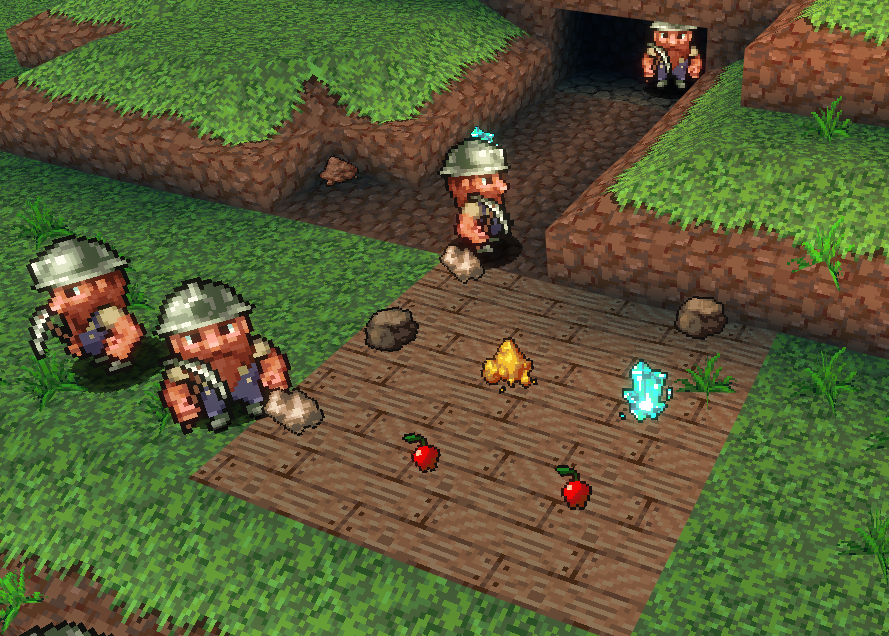
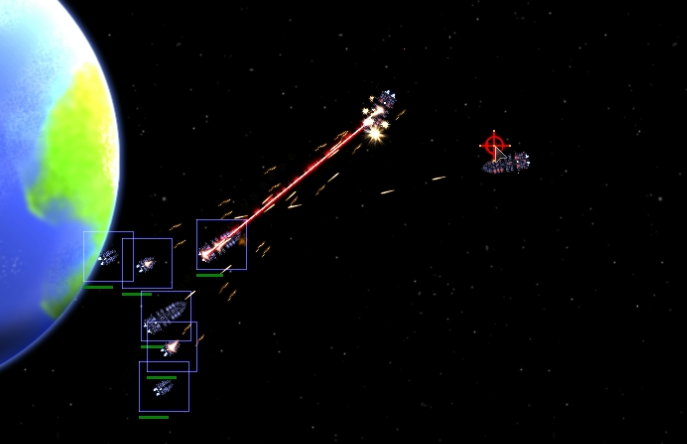
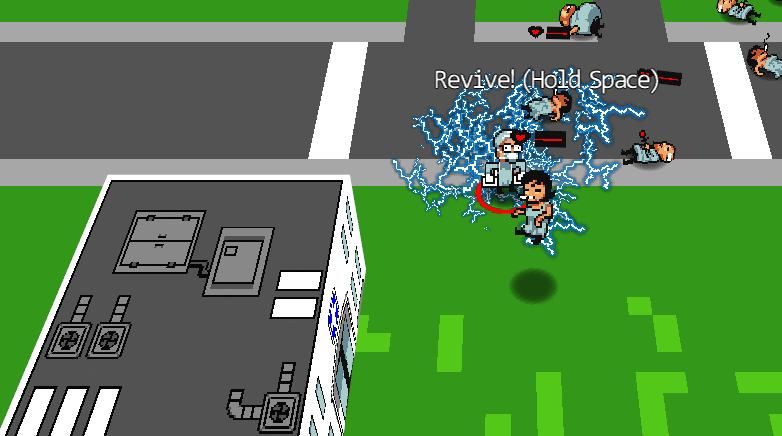
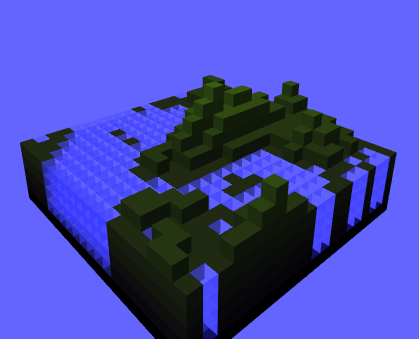

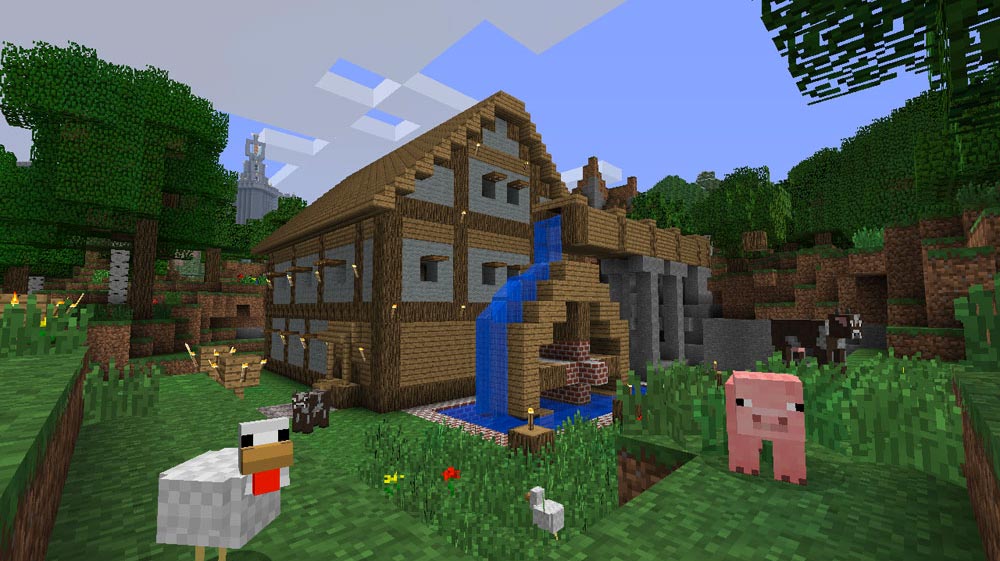
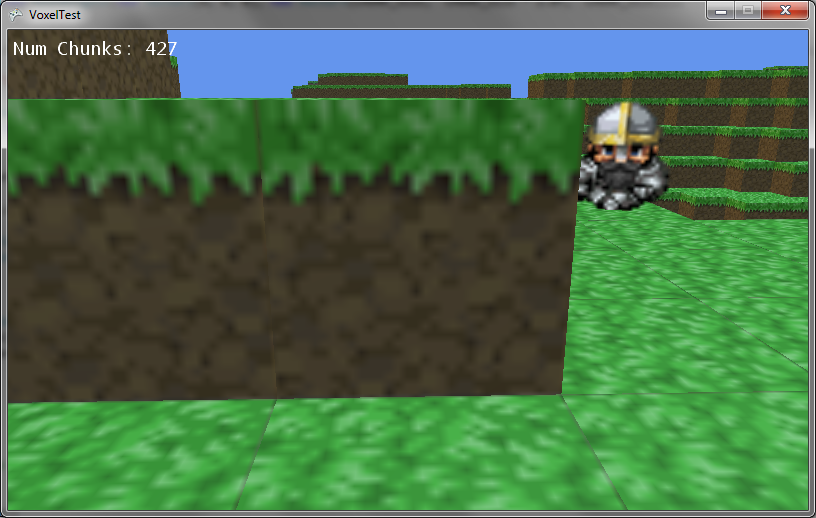
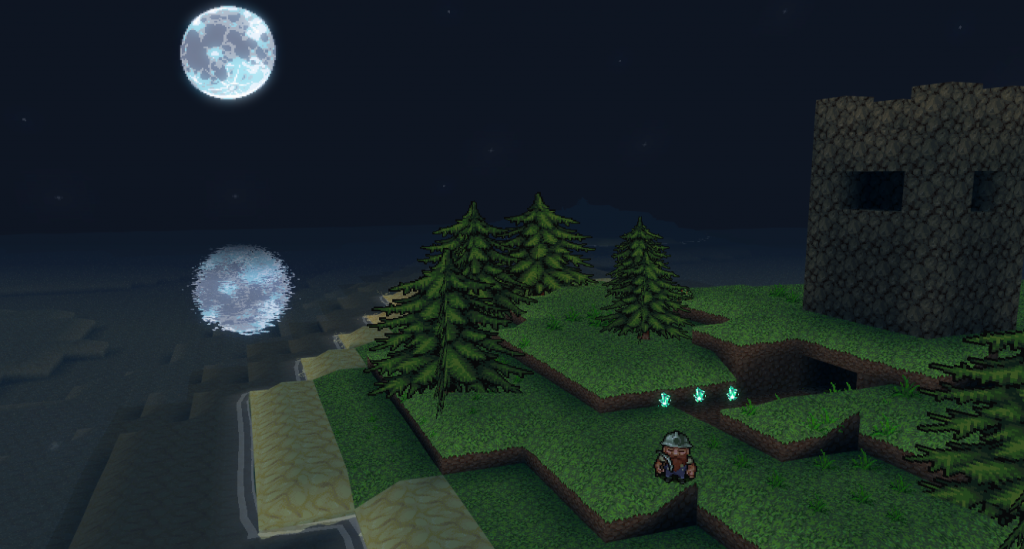

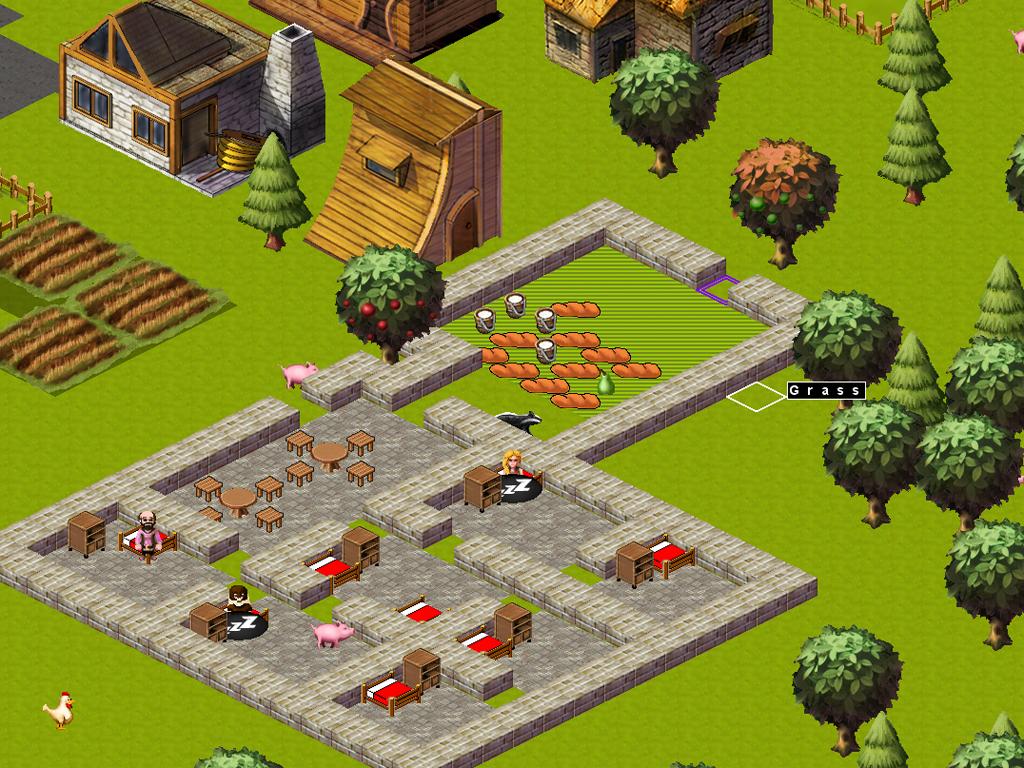

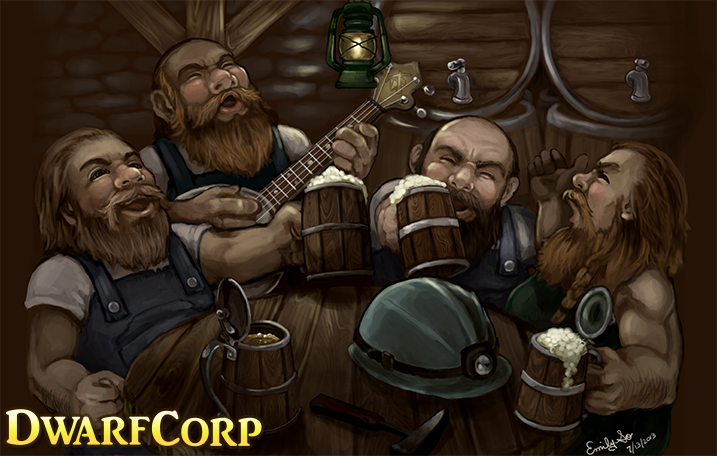
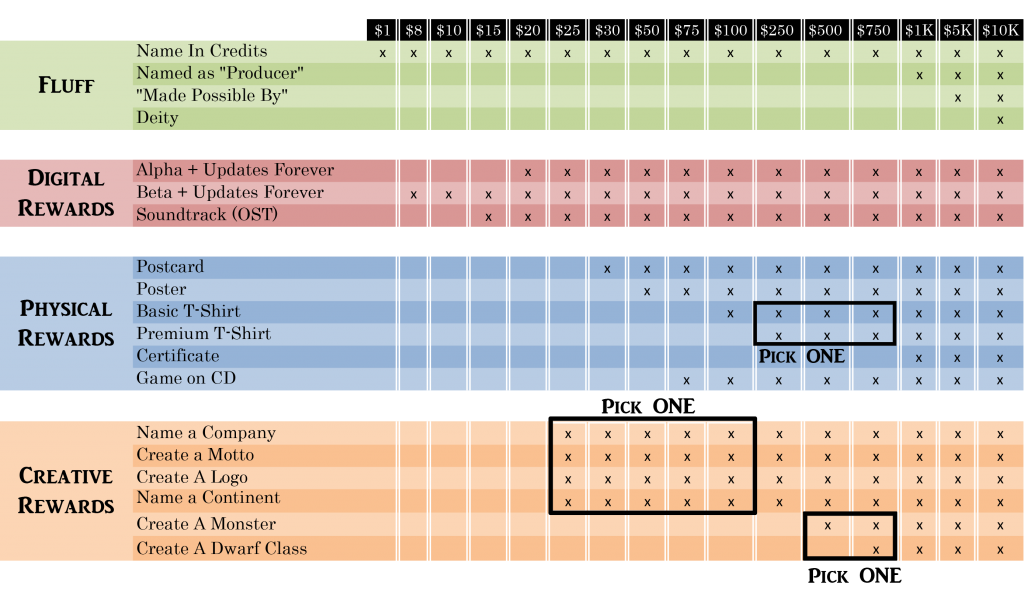

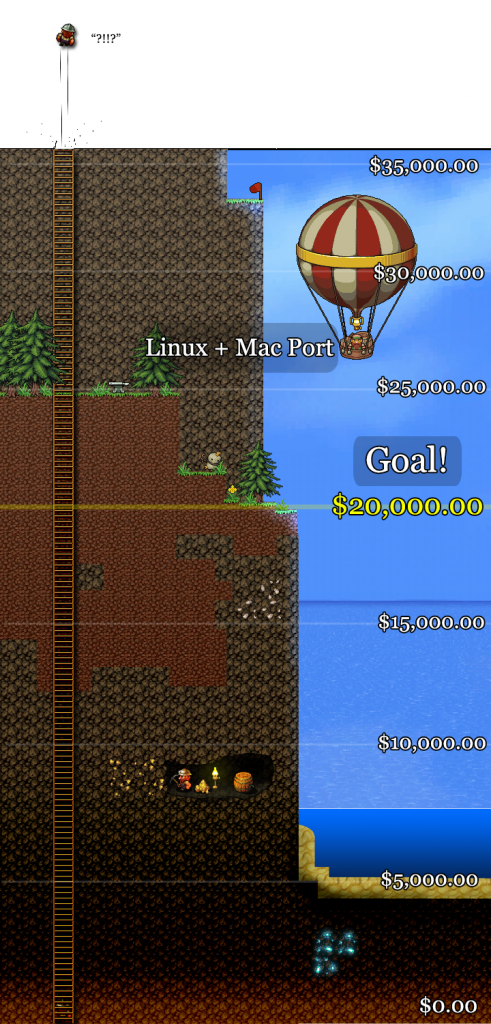



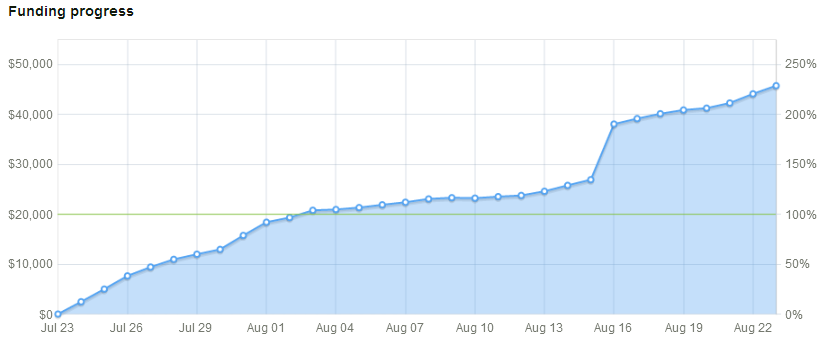
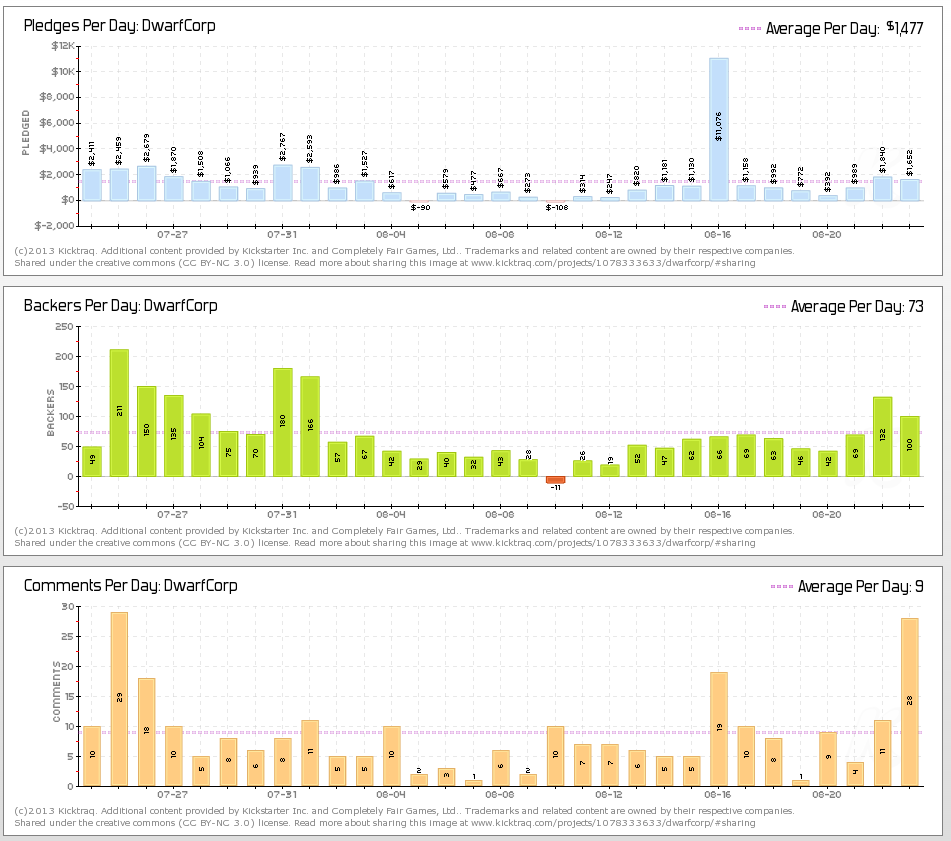
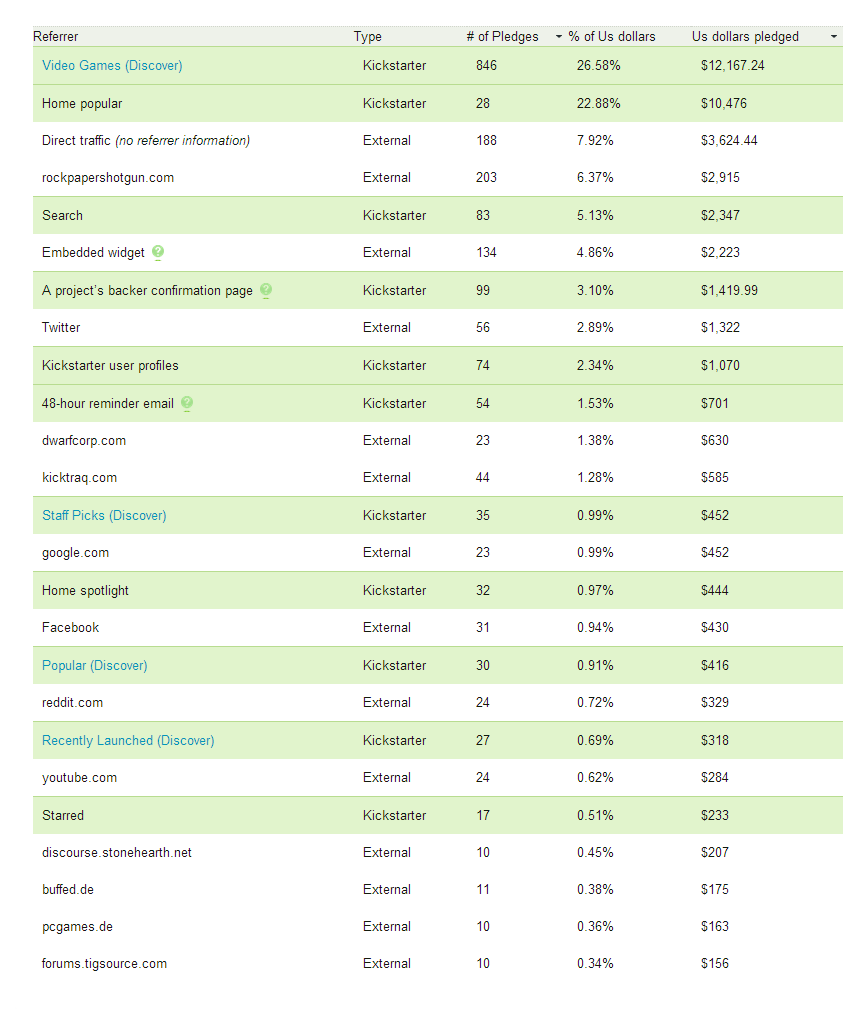

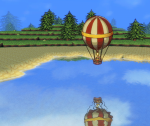









One of bests games i seen here!
Let's just say that I spent about an hour reading your "description", and just the length of it tells me that you have put an INSANE amount of effort into this game. Hope it goes well for you.
Is it still alive? Because it is such a GREAT project and i'd love to see it done and i'd gladly pay for it :)
Congrats on all the success so far guys. This game looks great. Looking forward to playing!
Second most hyped game on my list now.
That trailer was hilarious. Congrats on you guys getting funded.
I'll definitely pick up a copy when it releases.
We need that skirmish mode!!!!
Grats guys you made it to 100%
Fun game its just after i spawn it gets SUPER laggy and my dwarves will go and pick berries and stay there after gathering the stuff PLZ HELP!
How can I save the world?
It is not currently possible to save the game. Sorry :(